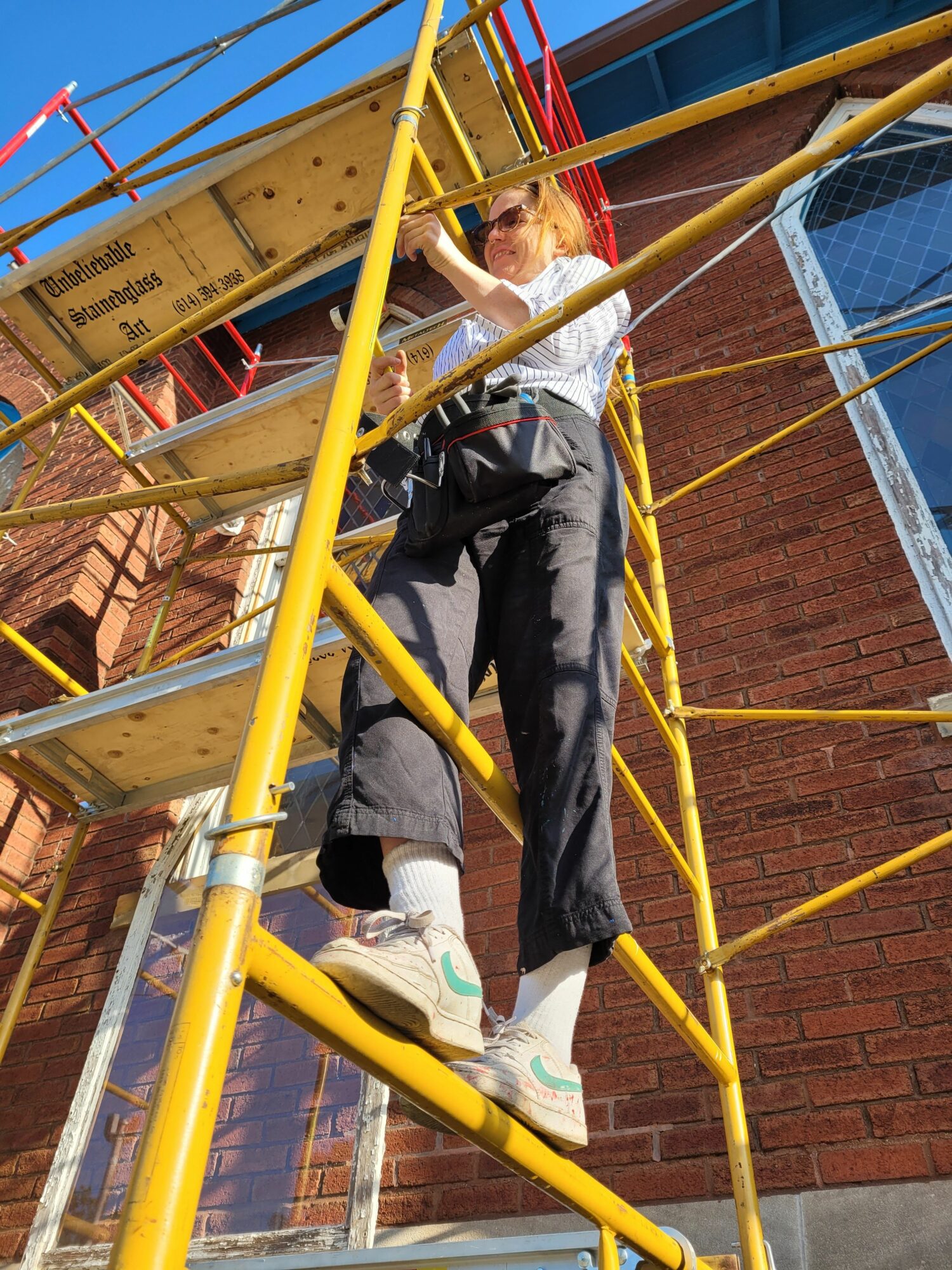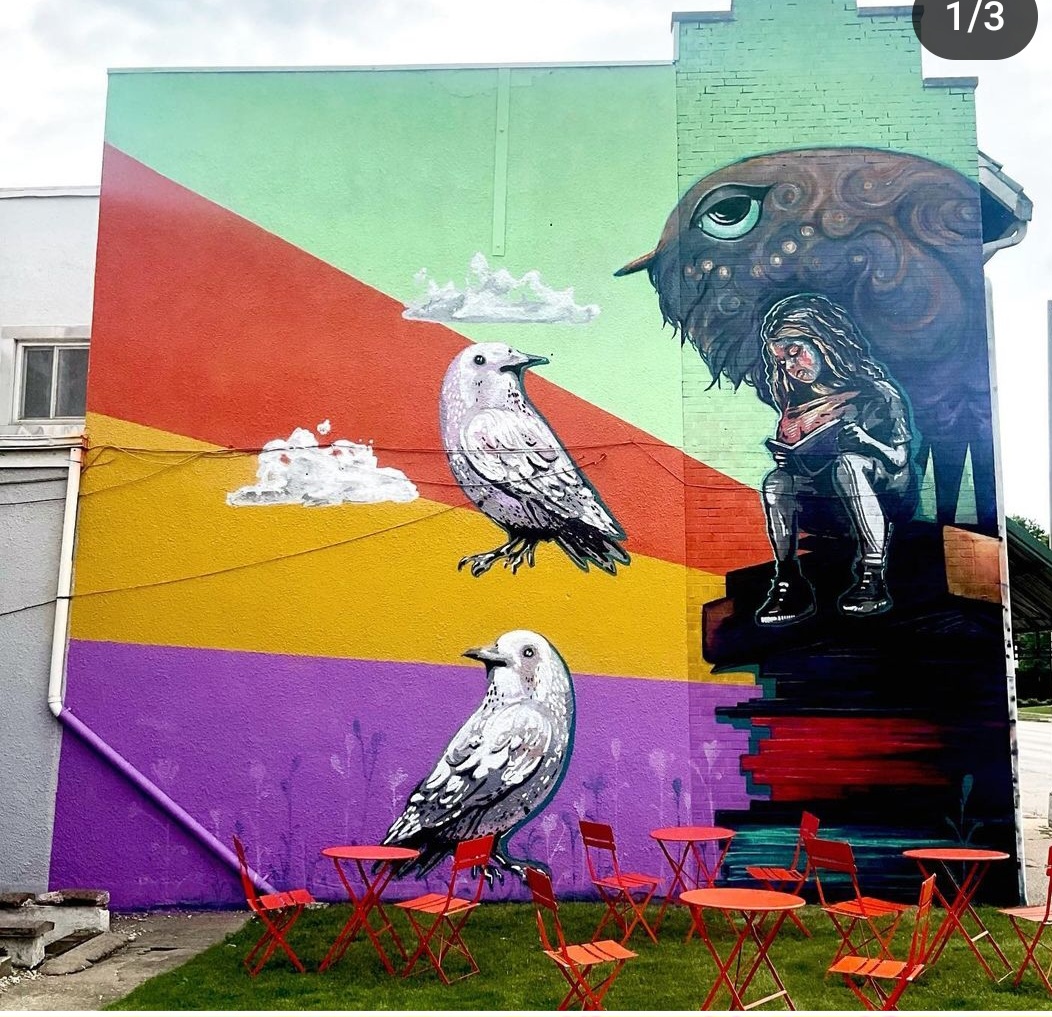

Today we’d like to introduce you to Isabel Francis Bongue
Hi Isabel, so excited to have you on the platform. So before we get into questions about your work-life, maybe you can bring our readers up to speed on your story and how you got to where you are today?
My work blends environment, sense of place, personal experiences and storytelling into community space making. I’m a muralist, painter and landscape designer and honestly, it’s been a bit of a winding road to get here.
I was raised on a farm in rural Ohio, by two agricultural scientists who wanted to homestead. My mother is Colombian, and our neighbors were very prejudiced towards her. Watching her learn to navigate those dynamics both angered me and gave me a curiosity about cultural differences which I think shows up in some of my work.
I was a smart, socially awkward kid, always asking inconvenient questions out of genuine curiosity, which often got me into trouble. I still did well in school, and after high school, I was torn between science and art but ended up getting a full ride to study art, which I paired with an Environmental Studies certificate. After graduating, I worked out West in conservation and youth crisis programs. I loved it, but the pay was low, the work was hard, and it burned me out.
I eventually moved to Colombia with a partner whose visa was expiring. He was an artist who I idolized. That relationship lasted all of a month after the move, but it gave me the opportunity to reconnect with my family, who I hadn’t seen in years, and understand my heritage in ways that weren’t accessible back in Ohio.
I got a job teaching English and another in a theater, where I learned how to paint backdrops and eventually got introduced to muralism. My boss was an eccentric Frenchman who yelled in broken Spanish, but for some reason, I was one of the few who could understand him. I stayed in Colombia for nearly five years.
The pandemic brought me back to Ohio, where I joined OSU’s Landscape Architecture program while finding ways to keep painting. I learned how to write grants and started taking on projects that aligned with my passions. Now, I’m in Columbus, working with 83 Gallery, where we focus on making art accessible to everyone. I’ve also started community-driven initiatives, like creating a pocket park on the East Side through a Beautiful 614 grant. It feels like everything is coming full circle—blending creativity, community, and the environment in meaningful ways.
I’m sure it wasn’t obstacle-free, but would you say the journey has been fairly smooth so far?
No it hasn’t, and I don’t know if it ever will be.
I stopped doing art after college, partly because i didn’t know what to do with it, and partly because I was young and I had a partner who made me feel selfish to focus on it. After graduating, I ended up taking a food service job, because that was what was available in small town Ohio with an art degree, and stuck around to support him while he started his business. Once I realized what a one sided deal this was, I was out-but it still took years to build back my courage to show my work.
My first job out of graduate school was a disaster as well- i thought it was a dream, a creative job with a big girl salary and health insurance, but it soon became clear that my neurodivergent tendencies and unconventional background were not welcome.
The pandemic was hard- I don’t think people realize this, but we had a real quarantine in Colombia…You could only leave the house one day a week for several months, and all public transport was closed down.
Everything was shut down- all the theaters were closed for two years, and there were no opportunities. I had just started doing a mural tour, but I had to make it back home the day before I started the first one. We could only get the most basic goods- things like corn, rice, coffee, sugar etc… but we were lucky- a lot of people went hungry.
Painting murals is also hard, physically, and, it’s hard to make a living from- I make some money, but I struggle. As a woman, it can be dangerous- you are very visible and the general public has access to you. As an artist, you also generally don’t have much protection from clients or employers you contract for from sexual harassment either.
Sometimes I think that life would be a lot easier if I had the sort of personality that was satisfied in a normal job, that knew what questions not to ask, that did what she was told, and was protected. But I can’t seem to help myself, and so I’ve learned ( and am still learning) to create a life on my own terms.
Alright, so let’s switch gears a bit and talk business. What should we know about your work?
I am a muralist, designer, and community artist specializing in projects that blend creativity with environmental and social impact. My work often combines storytelling and design to create vibrant public art that fosters community engagement I approach my work as a dialogue between people, place, and ecology, creating pieces that educate, inspire, and activate
What sets me apart professionally is my interdisciplinary background, blending architecture, conservation, and fine arts, which I can draw on for technical expertise. Conceptually, it’s weird.
I explore identity, resilience, and transformation, and how personal and collective histories fit together. I use surrealism and vibrant imagery, and reflect on themes like memory, trauma, and the fragile nature of selfhood.
I try to create a visual narrative where beauty and pain coexist, fostering moments of introspection, and reconnection with their surroundings. I hate simplification. I want to explore the complexities of our experiences with tenderness, and understand the nuances that shape who we are.
To help “place” myself creatively, I think of my work as belonging in a place called the city of fractured memory. It’s a labyrinthine place somewhere between Macondo and Brave new world,and a place where memory is fragmented. In the City, time is cyclical and identity and existence are fluid, as personal histories intertwine. Nature plays a vital role, reclaiming spaces and blurring the lines between the mundane and the extraordinary. The city itself shifts and transforms as memories are reclaimed or forgotten. Weird, but it helps me find the continuity in things.
What I’m most proud of is hard to say. I’m a bit of a perfectionist when it comes to my work, which I’m learning isn’t always good, and I have trouble feeling “proud”, because it can always be better. I do get moments when I’m quite pleased and proud of something, but at the moment, it’s hard to pinpoint something specifically.
We all have a different way of looking at and defining success. How do you define success?
I’ve been getting some recognition for my work now, which feels great. For me, though, success is more about being able to make a living from my art—something I’m still working toward.
It means a lot when people connect with my work or take something meaningful from it. There’s a couple around town that tell me their first date was taking a walk to see one of my murals, and that makes me really happy.
I feel incredibly lucky and successful in my relationships—both platonic and with my wonderfully supportive partner and cat. To me, those connections are a huge part of life and often undervalued in how we measure success
Contact Info:
- Website: https://www.isabelfbongue.com
- Instagram: https://www.instagram.com/la.mona.isa/
- Facebook: https://www.facebook.com/isalamonaisa/ Isa.bel Bongue




















